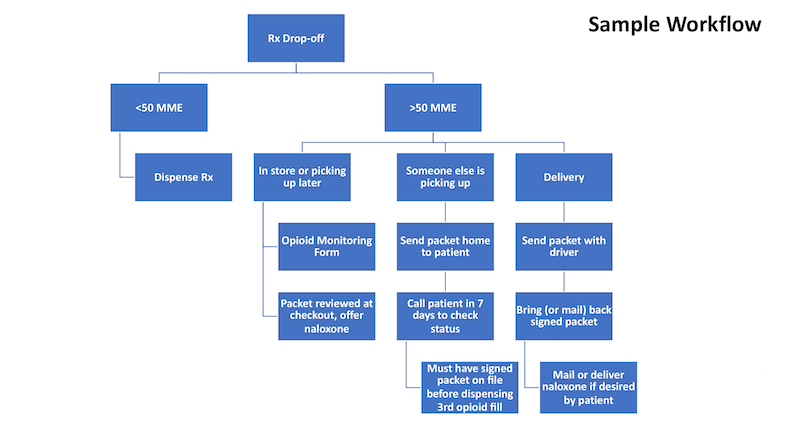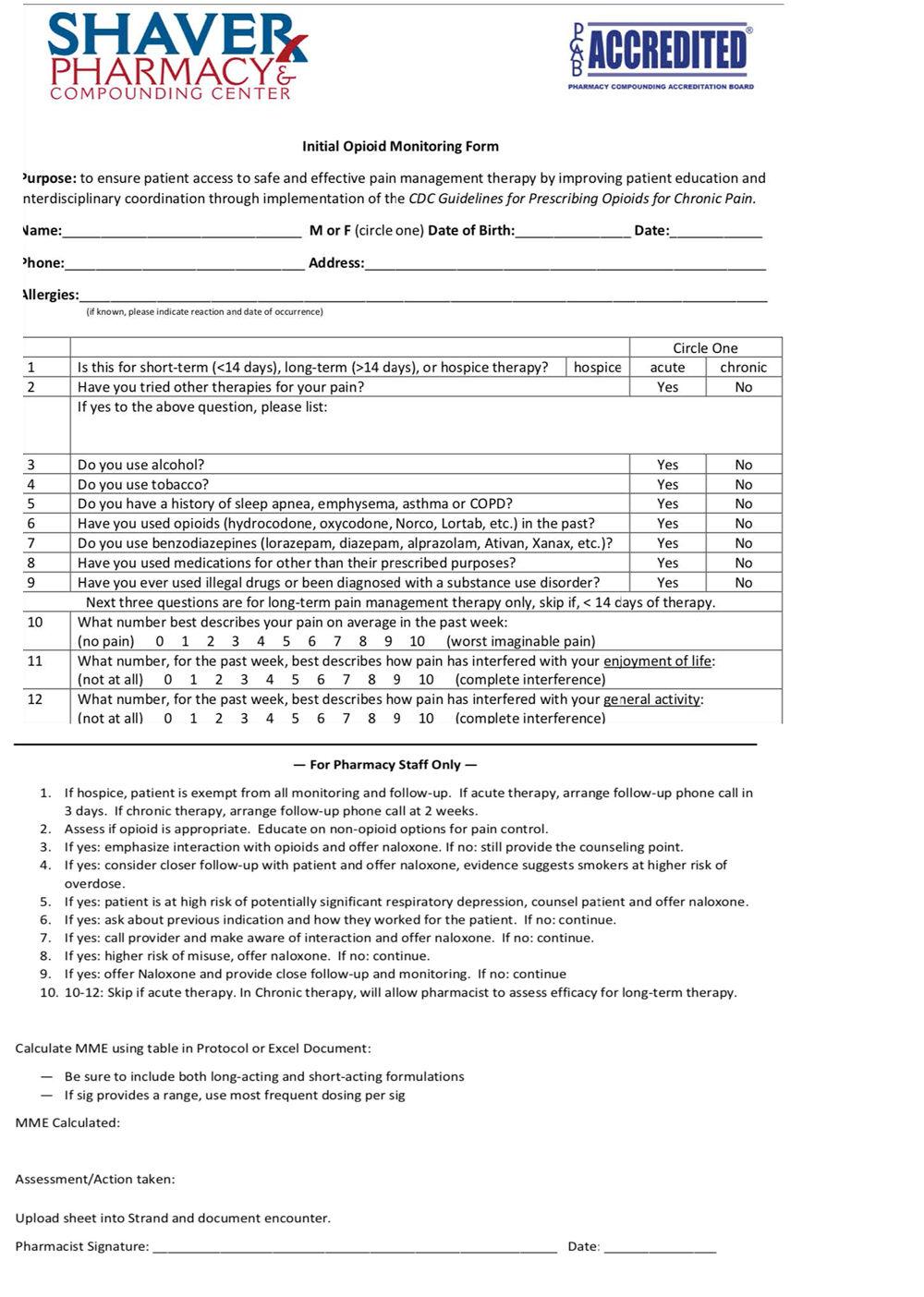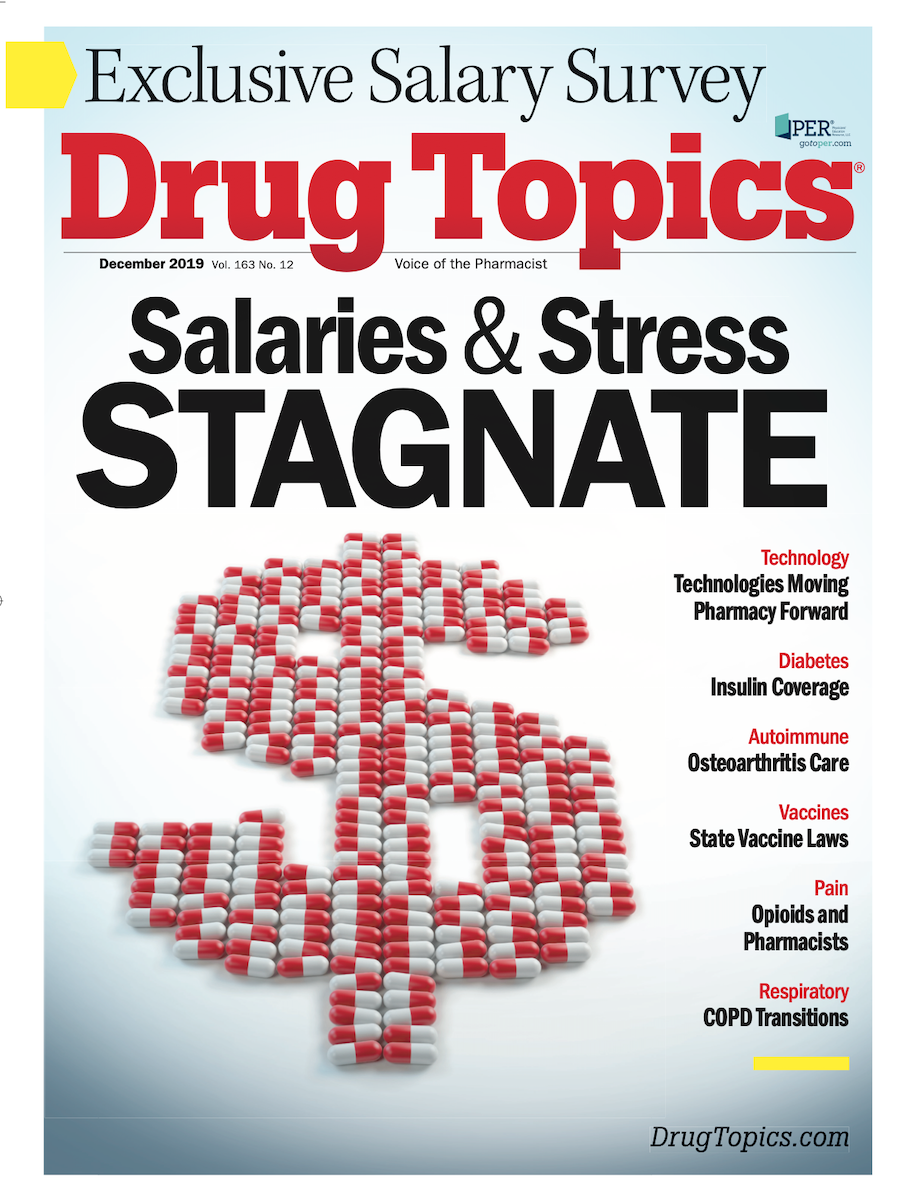Opioids: The Pharmacist’s Role
Practical tips to help keep patients safe.

Fig. 1, Click to expand

Fig. 2, Click to expand

As the opioid crisis rages on (130 people die of opioid overdoses each day), pharmacists face a number of challenges: how do you keep potentially dangerous medications from those who abuse them while not making things overly difficult for the chronic pain patients who rely on them-all while maintaining a busy pharmacy?
While counseling is important, it’s difficult to do when there’s a massive backlog of unfilled orders. To help manage that, pharmacists at the recent NCPA convention in San Diego gave a talk titled “Caring for Patients on Opioids.”
In the talk, Lorri Gebo-Shaver, PharmD, owner of Shaver Pharmacy & Compounding Center in Pocatello, ID; Caitie Brown, PharmD, PGY1 community-based pharmacy resident for Idaho State University; Shanna O’Connor, PharmD, assistant professor, College of Pharmacy at Idaho State University; discussed how the pharmacy manages to help patients in the real world.
The first real step, O’Connor said, is to ask good questions. She said that it goes against what’s often done the pharmacy: the pharmacy is busy and pharmacists are overwhelmed, so they stick to largely yes/no questions to help speed along the process. She said in this case, however, it is important to ask open-ended questions that can help reveal a patient’s true situation.
In Idaho, pharmacists are able to prescribe naloxone, which Gebo-Shaver does for certain patients and has them sign a form acknowledging that she offered it to them-this creates a paper trail that helps protect her and her pharmacy, as well as shows the seriousness of the situation to the patient.
Even so, she said that “having that conversation at first is really hard.”
One of those hard questions involves naloxone-as Gebo-Shaver said, “How do you say appropriately what naloxone is for?” She said she compares it to epinephrine, saying that it’s something that can save your life in an accident-perhaps even for someone you don’t know.
She described one patient who, when offered naloxone, initially declined. But that patient then returned to her pharmacy the next day with his wife and son who he wanted to attend the training as well. He said that he had a friend recently pass away from an overdose, and was so thankful that the pharmacy was willing to take time to provide education.
Related article: Alternative Approaches to Opioids
To begin the workflow (Fig. 1), start by looking at pain holistically through a pain inventory. This can help the pharmacist make an informed decision about alternatives. As O’Connor said, “What got us into this situation is that we got very comfortable with very high doses of opioids,” so providing alternatives to those high doses is key.
The important thing to remember, Gebo-Shaver, stressed, is that the pharmacist isn’t the only one able to help. While technician duties vary by state, in Idaho where they are given more abilities, Gebo-Shaver says she sees herself as a quarterback in her pharmacy who is protected and helped out by a defensive line. (For states with weaker technician powers, she advocates reaching out to state boards of pharmacy and advocating for enhanced abilities).
O’Connor pointed to a workflow used to intake a new patient using an opioid monitoring form. With this form (Fig. 2), as well as checking the state’s PDMP, O’Connor says most of the information can be collected before the patient’s packet gets to the pharmacist. This process also provides paperwork that can protect the pharmacist and create a record showing that patients were given correct counseling.
So, the speakers said, ask yourself questions such as “what steps does your state require be completed by the pharmacist, and what could be done by a technician or cashier?”
Utilizing a process that protects both patients and pharmacists doesn’t have to be time consuming-while it does take time, the speakers stressed that the more a pharmacist does it, the faster it goes.
Figures courtesy of Lorri Shaver, PharmD, Shanna O’Connor, PharmD, Caitlin Brown, PharmD, and NCPA
